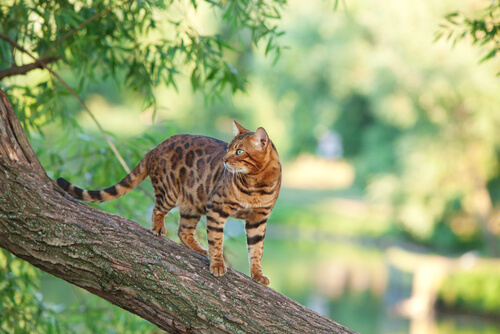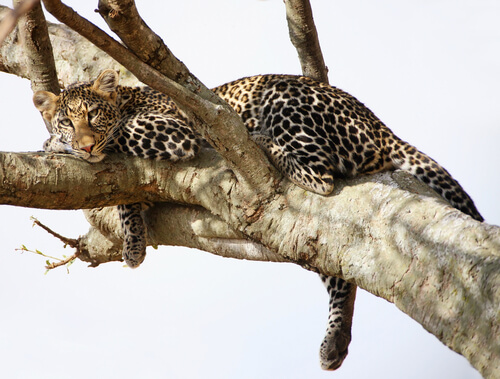Bengal Cats and Kittens
Bengal Cats-The Ultimate Bengal Cat Pet Guide
Bengal Cat Guide: The Facts that you always wanted to know about your Darling!
Bengal Cats (Complete Pet Owner’s Manual)
The Guide to Owning a Bengal Cat: History, Character, Breeding, Showing, Health
Bengal Cats: The Ultimate Guide to Owning a Bengal Cat
The Ultimate Guide To Bengal Cat: What Everybody Ought To Know About Bengal Cats
The Bengal cat is an exotic cat that looks like a tiger, but is still simply a cat. It’s agile and strong, with a muscular body that looks like it belongs in the jungle.
It’s renowned for its gorgeous coat markings, which come from its Asian leopard ancestors. While it may resemble the toughness of leopard, don’t forget that it is a domestic animal after all.
Breed History
The amazing bengal cat is a relative newcomer to the world of cat breeds. This special leopard-like cat was created from a cross between a common domestic cat and a wild Asian Leopard (which during the 1950s, could be purchase at pet stores).
The first breeder was an American by the name of Jean Mill from California, who attempted to breed a new and more unique generation of cats. In fact, she used to house a wild Leopard cat and allowed her to play around with her little domestic cat named Tom.
Even though she found it hard to believe, kittens came to be from this friendly affair. She grew to love them and decided to keep a spotted female one. After this, many breeders around the world were interested in developing these cats as a breed. Today, bengal cats are considered to be fully domesticated cats.
Training

If you own a Bengal cat, you should probably know that although your cat may be affectionate from time to time, it has a natural dominant and strong personality. This means that your ‘little kitten’ is not a simple house cat.
But there is solid information online on how to train your little Leopard cat so you can fully and comfortably enjoy his or her company. Following are some training techniques for your bengal cat.
Vertical Space

Offer your Bengal chances to climb. You will very soon understand that your Bengal loves climbing. Otherwise, it may try to find other things in your home to climb on its own. Some Bengal cat owners build something like a small ‘gym’ for their little athlete.
Make sure you provide your Bengal with a new gym, which offers your cat various platforms and boxes. It’s best to place a cat gym besides a window, so your cat can climb and have fun watching out of the window. Fun fact: Bengals actually love to watch birds fly.
Playtime
Play with your Bengal. Have fun with your little ‘tiger’. You’ll notice that your Bengal loves attention and actually enjoys playing with you. You need to also remember that Bengals love to sleep with their ‘parents’, so give your cat the chance to snuggle up on your bed for the night. Show your cat that you love playing together and spend a lot of time entertaining them.
For example, they love anything moves. So get a feather and move it on the ground. Your Bengal will think it’s alive and will start playing with it immediately. Remember that your beloved cat lives around 12-18 years on average, so make the most out of each day and enjoy spending fun time together.
While you play, teach your cat to behave. If your cat is playing with something that you don’t want it to, you should find another toy in order to distract him or her. If while paying, your cat starts acting aggressively, biting your hand for instance, try to distract it with something else.
If you just try to pull your Bengal away, your cat will probably get more excited, get more aggressive, and end up giving you a severe bite. Keep in mind that some cat bites might be dangerous. In case you have a bite that breaks your skin, immediately wash it with an antibacterial soap.
Bengal Care
Since Bengals are carnivorous, you need to feed your Bengal good quality canned or dry food that is high in protein. Most cat foods in the market today contain less meat and more carbohydrates, such as rice, corn and soy.
A great supplement for your cat’s diet is raw meat, provided that it is fresh and not processed. If you wish, you can also make your own cat food. Make sure that protein makes up about 70%-80% of your bengal cat’s diet.
Remember to read the feeding guide on the back of each food package to understand the proper amount of quantity that you should feed it. You also have to be careful that your cat does not become overweight. For instance, check once a week if it has a wasteline. If not, you need to cut back its food allowance by 10%.
Give your Bengal water. You may buy running water for her or you can simply give her water in a dish. Keep in mind that bengal cats just love water. There are some bengal cat owners that turn on the faucet in the bathroom and let them jump up and drink it. They will sit and play with it with a paw for hours. But you need to remember to keep the toilet seat cover down.
Do a small amount of grooming. A bengal’s coat doesn’t need a lot of care, because it has a great satin finish. However, like most cats, if you start brushing your Bengal just like any other common domestic cat, you’ll see that her or she will love it.
More specifically, you can use a rubber grooming glove in order to get the shed hair out of your cat’s coat. Make sure to keep your cat’s hair sleek and glossy in order to keep it looking more beautiful.
Visit a veterinarian. You should schedule some regular visits to the vet. Keep in mind that your Bengal needs to be tested for her health regularly, in order to remain healthy with vaccinations and neutering.
For some cat, this can be a very stressful time, as they get used to staying at home. So, try to make the visits to the veterinarian easier for your Bengal and remember that your emotions, such as your attitude and worries, can be very easily picked up by your Bengal cat.






